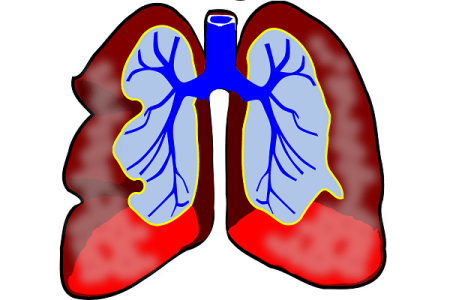What is a Particulate Matter?
Particulate matter refers to microscopic solid and liquid particles that remain suspended in the air. They are extremely small and most cannot be seen with naked eyes. Some particulate matters though are large enough to see, but others can be seen only with a microscope.
Particulate matters are carried by the wind and can travel thousands of miles in the air. They form in the atmosphere because of chemical reactions between pollutants. The two kinds of particulate matter that are of most concern are – PM-10, which is coarse and PM-2.5, which is fine.
Examples of particulates are tobacco smoke, smog, oil smoke, fly ash, cement dust, atmospheric dust that is suspended in air, settling dust, viruses, pet allergens, bacteria, dust mites, and pollen etc.
Particulate matter is denoted by the acronym ‘PM’ followed by a number which indicates the diameter of the particle. For example, particulates with diameters between 10 and 2.5 micron (micrometer) are called PM 10 and particulates with diameters of 2.5 micron and less are called PM 2.5. Just that you get a comparative idea, know that the diameter of a human hair is about 50-150 micron and that of a sand grain is about 80-100 micron. This means the particulate matter is much finer than human hair and sand particles and is not visible with the naked eye. Another category is PM 0.1 and it is known as ultra-fine particulate matter.
Harmful Effects of Particulates on Humans
PM 2.5 and PM 10 are the most important air pollutants and both are extremely harmful to humans. The International Agency for Research on Cancer (ICAR) and the World Health Organization (WHO) have declared particulate matter as a Group 1 carcinogen. The substances and exposures that can lead to cancer are called carcinogens.
Particulates such as PM 2.5 and PM 10 are capable of penetrating deep into the lungs and enter our blood stream from there. They can cause serious and irrevocable damage to our respiratory and blood circulation systems.
These particulates may cause short-term as well as long-term harmful effects.
Short-term exposure may include such as:
- Coughing
- Sneezing
- Throat irritation
- Headache
- Dizziness
- Nausea
- Runny nose
- Shortness of breath
- Irritation in eyes and nose etc
Prolonged exposure to the particulate matter may cause long-term problems such as:
- Respiratory disorders such as irritation of airways, difficulty breathing etc
- Birth defects
- Heart problems
- Hormonal imbalances
- Irregular heartbeats
- Worsened asthma
- Decreased lung function
- Cancer particularly lung cancer
- Early death
Particulate Matter and Air Pollution – Air Quality
To determine air quality and calculate air quality index (AQI), atmospheric concentration of 8 air pollutants is monitored by monitoring stations. Not all monitoring stations may be equipped with machines and detectors to measure all of the 8 pollutants. However, in order to measure AQI, at least three pollutants have to be monitored and analyzed or else the data is considered insufficient for sampling.
Of the at least three air pollutants, at least one has to be either of PM 2.5 or PM 10. This is an indicator of how harmful and deadly the particulates can be and their role in air pollution.
Those who are most affected by the particulate matter are:
- Older adults (over 65 years of age)
- Infants and children
- People with heart or lung disease, such as asthma and chronic obstructive pulmonary disease (COPD)
- People who work in or are active in outdoors
- People with diabetes – Diabetics face increased risk because of their higher risk for cardiovascular disease among other reasons.
What Are The Sources of Particulate Matter?
Combustion of fossil fuels is the most prominent contributor to particulate matter. This includes sources such as petrol, diesel, natural gas, kerosene, coal, wax etc. Other sources that release particulate matter on burning are:
- Firewood
- Biomass
- Biomass
- Hay
- Cow dung cakes
- Natural events such as volcanic eruptions
- Wildfires
- Burning of other cooking fuels
Particulate matter mainly enters the body through breathing. Breathing polluted air or smoking cigarettes or living near traffic and construction or industrial areas increases exposure to the particulates.
How to Protect Yourself From Air Pollutants?
One of the easiest but not always possible ways to avoid air pollution is to stay indoors at home. Avoid stepping out on days when the air quality is extremely poor. But if it is important to move, avoid places that have industrial or traffic concentration or construction areas.
It is important to know that indoor air in your rooms can also be as bad as outside air or even worse than outdoor air. You might need to vacuum the indoor or purify it using air purifiers regularly.
Some of the ways you can limit exposure to these deadly particles are:
- Limit standing near construction sites and traffic spots
- Use high quality masks when you move outdoors
- Close the windows of your homes when air quality is poor particularly toward evenings to noon. The air quality is poor in mornings.
- Avoid walking or jogging outside in morning time when air quality is poor
- Stop smoking if you do smoke. Never smoke indoors if at all you do.
- Limit the use of fireplaces and wood stoves. If at all you use these energy sources, make sure that wood is burned properly and is well seasoned instead of using wet or green wood.
- Follow the air quality reports in your area if particulate matter is a concern on any particular day.
- Follow recommendations from health and government agencies for avoiding physical activity or prolonged exertion outdoors.
Ultrafine Particulate Matter and Risk of Lung Cancer
The International Agency for Research on Cancer (IARC) classifies outdoor particulate matter (PM) as a Group 1 human carcinogen. However, it is not clear whether the lung cancer risks primarily linked to long-term exposure to fine PM are driven by its constituent ultrafine particles, which may be more toxic due to their specific physical and chemical properties.
Several studies are being conducted to evaluate the risks of lung cancer due to long-term exposure to these particulates. These studies involve population samples with important features such as significant regional variations, large number of lung cancer cases, and smoking vs non-smoking histories along with their residential histories.






